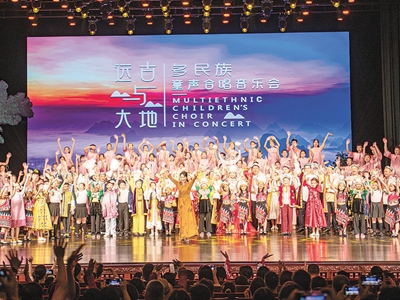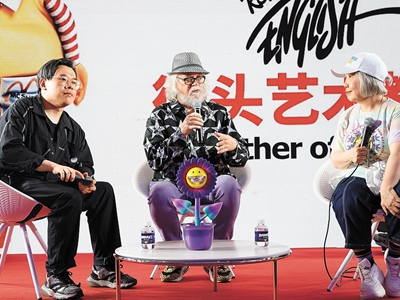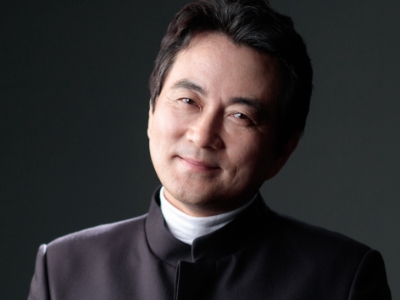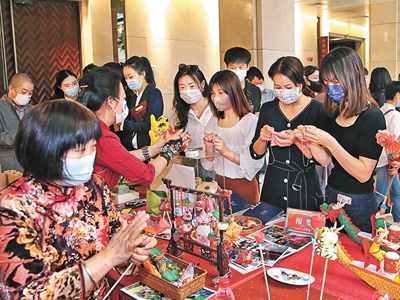Modernist calligraphy on classic bamboo path
Writer: Cao Zhen
Email of the wirter: caozhen0806@126.com
More than 200.5-meter tall green bamboo stalks have sprung up in Hall A of OCAT Shenzhen, turning the warehouse-shaped art space into a cool grove. Writing his unique undecipherable calligraphy on each of the bamboo stalks, Wang Dongling, the creator, attempts to echo an ancient Chinese natural scene, where scholars share poems together, to offer a fascinating contemporary twist on a classic form.
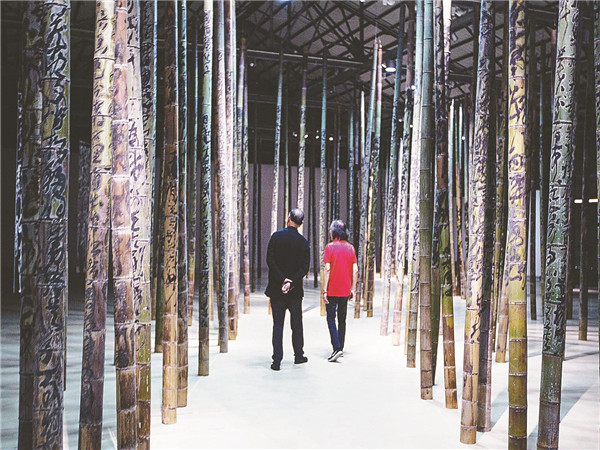
Wang Dongling’s “Bamboo Path” exhibition is a fusion of traditional calligraphy and modern installation. Photos by courtesy of OCAT
“The ‘Bamboo Path’ piece is a fusion of traditional calligraphy and modern installation,” said curator Wu Hung, a highly regarded art historian and a permanent member of the American Academy of Art and Science. He holds professorship at the University of Chicago and sits on many international committees.
“In Chinese art history, bamboo is a commonly seen object in paintings. I was often moved by the images of ancient scholars standing or writing in a bamboo grove. Before the invention of paper, bamboo slips were the main medium for documents in China during the first two centuries. Now for the current exhibition, we created a space full of bamboo and tried to do something there as those ancient scholars did in a bamboo grove,” said Wu.
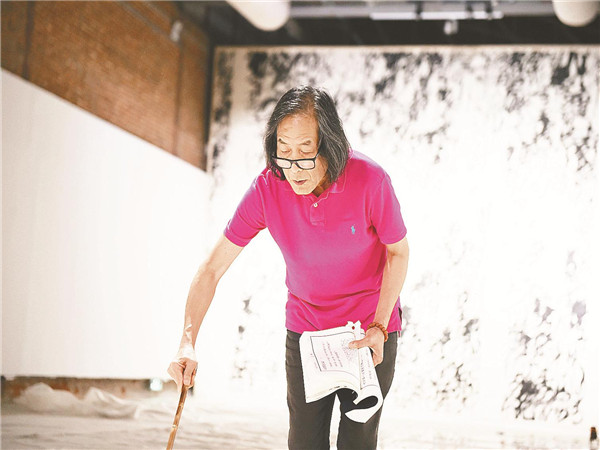
Wang Dongling writes ancient Chinese poems in his self-created “chaos script.”
“Interaction is an important feature of contemporary art. In this bamboo path, visitors walk around, relax and take selfies, so they also become a part of the artwork,” Wu added.
On the 201 bamboo stalks transported from Hangzhou, Wang wrote ancient Chinese poems in his self-created “chaos script,” which is abstract and undecipherable. Wu explained that Wang’s style emphasizes visual aesthetics rather than text itself.
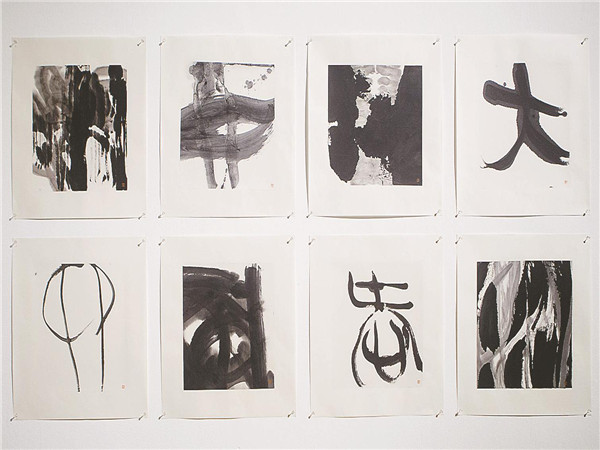
A close look at Wang Dongling’s writings on bamboo stalks (L) and paper.
“Calligraphy is not just writing characters but also highlighting the beauty of characters. The commonly seen Chinese calligraphy scripts such as the clerical script, the regular script and the semi-cursive script are decipherable because of their standard character forms. Cursive script is faster to write than the above styles and difficult to read for those who are unfamiliar with it. When it comes to Wang’s ‘chaos script,’ it is more rough, powerful and freehand, which is no longer significant in legibility but rather in artistry,” said Wu.
An internationally acclaimed calligrapher, Wang is a professor of calligraphy at the China Academy of Art, Hangzhou. He has been engaged in the creation and research of calligraphy since the 1980s. While continuing to work in traditional styles, he also explores the abstract potential of calligraphy in freely brushed works. His experimentation with “chaos script” has garnered him critical acclaim and his works have been collected by numerous institutions including the British Museum and The Metropolitan Museum of Art, New York.
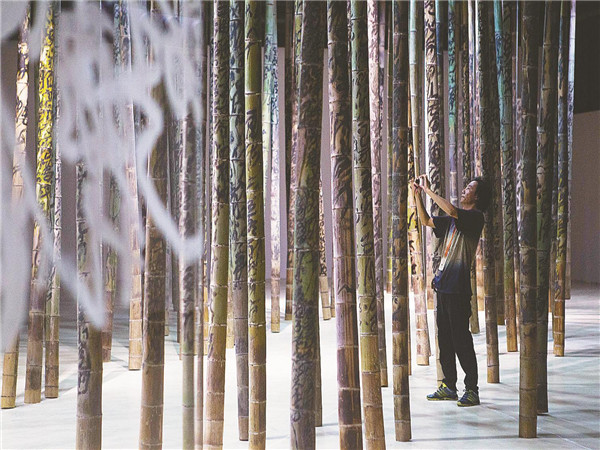
In OCAT Shenzhen’s Hall B, Wang is also exhibiting a large-scale calligraphy work, an 8.4x5.5-meter calligraphy of “chaos script” on paper. The undecipherable characters of poems from Ruan Ji and Ji Kang, were written vertically, so the whole work when hung on the wall resembles a magnificent waterfall.
Ruan (210-263) and Ji (223-262) were both poets and musicians who lived in the late Eastern Han Dynasty (25-220) and Three Kingdoms period (220-280) of Chinese history. They were two of the Seven Sages of the Bamboo Grove, a group of Chinese scholars, writers and musicians.
As is traditionally depicted, the group wished to escape the intrigues, corruption and stifling atmosphere of court life during the politically fraught Three Kingdoms period. They gathered in a bamboo grove near the house of Ji in Shanyang (now in Henan Province), where they praised each other’s works, and enjoyed a simple, rustic life. The Seven Sages stressed the enjoyment of Chinese alcohol, personal freedom, spontaneity and the celebration of nature. The group’s rural life became a common theme for art, having inspired not only generations of poets, but also painters and other artists.
Also in Hall B, Wang’s 100 pieces of ink abstraction are on display along with a video documenting the artist writing calligraphy.
Bamboo Path Dates: Until Nov. 12
Hours: 10 a.m.-5:30 p.m., closed Mondays
Venue: OCAT Shenzhen, South Area, OCT-LOFT, Nanshan District (南山区华侨城创意文化园南区OCAT深圳馆)
Metro: Line 1, Qiaocheng East Station (侨城东站), Exit A




